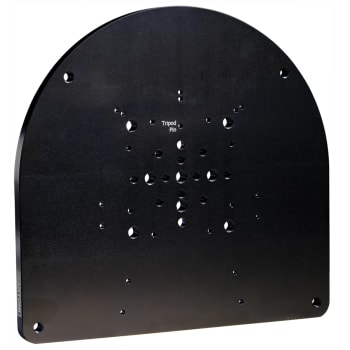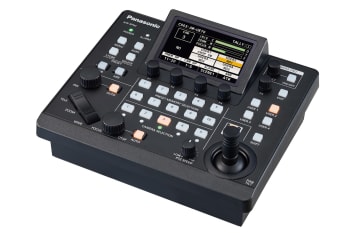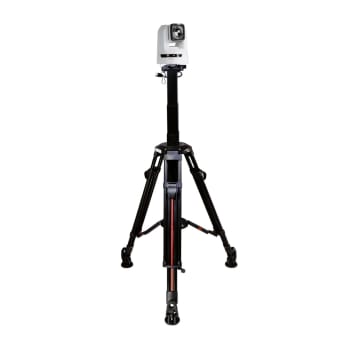Panasonic AW-UE160KE 4K PTZ Kamera 20x Zoom Sort
Panasonics nye flaggskip PTZ kamera med høy lysfølsomhet, ny fasedetektert autofokus, moiré reduksjon, 5G transmisjon og en flora av samtidige video- og IP-signaler, inkl. ST2110, NDI og SRT.
The new flagship PTZ camera from Panasonic!
4K PTZ Camera for an era of enhanced creativity and the pursuit of visual expression
The AW-UE160 can be used in a variety of situations even when the flow of people and cost control are required, including shooting large-scale events and studio recording and streaming. By combining a system camera with a PTZ Camera, it overturns the conventions of the video content industry with its unique style of video production that can be expressed through a variety of shooting techniques, its industry-leading shooting performance with a variety of new functions, and its scalability to support the latest international standards and a wide range of protocols and I/Fs.
Uncompromising shooting performance and operability

High sensitivity of F14/2000 lx, equivalent to a studio camera. Noise reduction and improved image quality are realized by the newly developed image processing engine also used in LUMIX. By combining a variety of functions, including the Phase Detection Autofocus (PDAF) function, a new feature in the PTZ Camera that enables high-speed focusing on moving subjects, the camera can produce high-quality videos in all kinds of situations, such as shooting in dark places and shooting moving subjects. The new PTZ new mechanism provides a high-precision operating feel while maintaining a compact body to support the delicate photographic techniques of professionals and contribute to uncompromising video shooting.
High sensitivity of F14/2000 lx, equivalent to a studio camera
The high sensitivity of F14/2000 lx allows for clear, clean images even when shooting moving subjects in dimly lit rooms such as stages and live venues. The sensitivity can be set to either Normal mode or High Sensitivity mode, depending on the shooting location and scene.
New generation engine that maximizes image sensor performance and improves image quality and AF performance
The camera uses a new-generation image processing engine, also used in the LUMIX GH6, with improved processing power. High-pixel image data output from the 1-type (1“) (effective size) MOS sensor, which offers an excellent balance between adequate depth of field, high image quality and high sensitivity, is processed at high speed to improve the S/N ratio.
In terms of autofocus (AF) performance, the subject detection performance has been greatly improved through faster processing of calculations and improved AF algorithms, and highly accurate AF is achieved by discriminating between the subject's movement and characteristics. It also offers high video processing performance and enables more unique video expression with resolution performance, high sensitivity performance, and color reproduction that does not compromise your commitment to video image creation.
New noise reduction (sD)
Realizes more natural and three-dimensional rendering with less noise than ever before, with improved performance in suppressing unpleasant color low-frequency noise and pleasant noise graininess.
Afterimage-less 3DNR
Significantly improves the ability to distinguish between still and moving areas and eliminates unwanted noise while suppressing afterimages.
New Intelligent Detail
Analyzes the characteristics of the subject pixel by pixel and determine flat/detailed/edge areas. By controlling image processing based on the results, detailed areas are rendered with a greater sense of resolution, while edge areas are suppressed from unnatural fringing (shoot phenomenon) caused by image processing. By performing appropriate image processing according to the subject, the camera realizes true descriptive power with high reproducibility.
Equipped with newly developed PDAF (Phase Detection Autofocus)
Equipped with a new AF system that combines phase detection AF (phase detection) with contrast AF (contrast detection). The camera's fast focusing speed and high focusing accuracy enable it to track subjects and capture in-focus images even in dark locations, whether it is continuously focusing on a moving subject or switching focus on multiple subjects.
Equipped with newly developed PTZ mechanism
A new PTZ mechanism was developed to maintain the compact body while incorporating a large lens for high sensitivity and system camera-level functions. The camera is quiet and does not disturb the photographer, and its high static accuracy provides high operability that allows the photographer to shoot exactly what he/she aims for.
Equipped with moiré reduction function by optical low-pass filter
Compatible with V-Log, which is used in Panasonic's high-end VariCam cinema cameras and LUMIX mirrorless SLR cameras. The wide dynamic range and wide color gamut provide images suitable for color grading. When used in conjunction with our camera recorders and studio cameras equipped with V-Log, video production with consistent image creation is possible. In addition, two settings, V-Log and V-709, can be selected independently for each output interface. Simultaneously output 4K V-Log video for color grading while outputting Full HD V-709 video for onsite monitoring.
Compatible with V-Log
Compatible with V-Log, which is used in Panasonic's high-end VariCam cinema cameras and LUMIX mirrorless SLR cameras. The wide dynamic range and wide color gamut provide images suitable for color grading. When used in conjunction with our camera recorders and studio cameras equipped with V-Log, video production with consistent image creation is possible. In addition, two settings, V-Log and V-709, can be selected independently for each output interface. Simultaneously output 4K V-Log video for color grading while outputting Full HD V-709 video for onsite monitoring.
Compatible with HDR (HLG)
Compatible with HDR (High Dynamic Range) which prevents white-out and blackout and produces images that are close to those of the naked eye. Compliant with HLG/BT 2020.
Equipped with Optical Image Stabilization (OIS) and Electronic Image Stabilization (EIS)
In addition to the conventional 2-axis in-lens image stabilization (Pitch/Yaw), which is based on fine-tuning of the lens, the camera also features roll correction that uses electronic image processing technology to provide highly effective correction. Vibrations on the mounting surface caused by installed audio equipment, opening and closing of doors, etc. are automatically compensated for to ensure stable imaging.
Realize next-generation video production with various shooting methods and functions
First PTZ Camera to be equipped*1 with the SMPTE ST2110 standard*2, 5G mobile router (USB tethering support) for high-speed, high-capacity video transmission (USB tethering support, return function for use as a prompter for performers, and two XLR channels for audio output to enable high-quality recording. It also supports essential functions for use with a system camera, such as a maximum 2x high-speed shooting function and a tally lamp on the rear panel.
The AW-UE160, which has been updated to specifications equivalent to those of a system camera while maintaining the flexibility of a PTZ Camera that can be freely set to any position and angle, can be applied to both use and replacement of a system camera, giving users a wide range of options for future video expression and production.
*1: As of October 2022, according to Panasonic research.
*2: Activation with the separately sold software key AW-SFU60G (released at the same time as AW-UE160) is required.
Industry’s first*1 SMPTE ST2110 standard*2 compatibility
The first PTZ Camera to support the SMPTE ST 2110 standard for video transmission over IP networks*1. By constructing an IP-based studio system in combination with the IT/IP platform “KAIROS” or AK-UC4000/AK-UCU600/AK-NP600, it is possible to improve the efficiency of the video production site.
*1: As of October 2022, according to Panasoic research.
*2: Activation with the separately sold software key AW-SFU60G (released at the same time as AW-UE160) is required.
SMPTE ST 2110 Professional Media Over Managed IP Networks
The SMPTE standard is an international standard that brings together several standards for communicating video over IP networks. The standardization of this standard has made it possible to handle individual data such as video, audio, and auxiliary data, enabling highly accurate synchronization.
The switch from SDI to IP-based transmission is underway in the broadcasting and video industry as a result of the standardization of the SMPTE ST2110 standard.
Industry’s first*1 return input function
The camera can be used as a prompter for return images and manuscript displays where the performer checks the video being streamed or broadcast on the spot*2, allowing adjustment and shooting to the targeted angle when performing chroma key compositing or when linking with AR/VR systems.
*1: As of October 2022, according to Panasonic research.
*2: SMPTE ST2110 is required to build the system; use of SMPTE ST2110 requires activation with software key AW-SFU60G (sold separately).
Supports 2x high-speed output
The camera captures smooth and beautiful slow-motion video by performing high-speed shooting at FHD 120 fps so not a single frame of the decisive moment is missed.
*1: fps is a unit of frames processed per second.
*2: Output from HDMI output or 2 SDI OUTs (3G SDI OUT1, 3G SDI OUT2). When outputting using 2 SDI OUTs, a separate slow-motion server is required.
Equipped with 2 XLR channels for audio input to enable high-quality recording
The camera is equipped with two XLR channels for audio input, allowing audio input from the left and right sides of the venue with high-performance microphones. It can also be used for filming at live performances, theatrical performances, and other sites where the acoustics are vital.
Industry’s first* 5G router (with USB tethering support for high-speed, high-capacity video transmission)
4K video data can be wirelessly transmitted on the spot by connecting a 5G mobile router or other devices via USB to the terminal on the rear panel. It is also possible to broadcast events and live streams from locations where cables are not laid or from outdoor event venues.
* As of October 2022, according to Panasonic research.
Equipped with a rear tally lamp
The tally, which was only available on the front (subject side), is now also available on the rear (photographer side) so that you can see the camera taking pictures from any angle. The tally lamp can be linked to the front and rear sides to set the brightness and select ON/OFF. The yellow tally lamp can be used for any number of applications, such as when there are a large number of cameras, when multiple cameras are used on site, or when simultaneous streaming and recording are required.
FreeD*1 Support for Construction of AR/VR*2 Systems
It is possible to connect Augmented Reality (AR) / Virtual Reality (VR) systems by outputting FreeD compliant commands. The camera’s tracking information (PAN/TILT/Zoom/Focus/Iris) is output in conjunction with the synchronizing signal, making it possible to easily build a system without an encoder.
*1: FreeD is a protocol that outputs camera tracking data for AR/VR systems.
*2: AR: Augmented Reality; VR: Virtual Reality.
Cropping (+ Zoom) function
It is possible to crop-zoom and cut out video at the same time as outputting an entire video shot in 4K. The cropping position can be specified from a maximum of three locations and can be easily operated from the AW-RP150 Remote Camera Controller or web browser screen.
Flexibility to freely set positions and angles
It is possible to shoot from high angles using ceiling mounts and totems, as well as low angles from in front of the audience or from the stage. It can be installed in space-saving areas where equipment cannot be placed or where it is difficult to deploy staff, thereby improving efficiency in video production.
Ease of use and versatility reduces the stress of shooting on-site
Equipped with a wide variety of I/Fs and protocols that can be connected to all types of imaging sites and systems and reduce the burden of introduction to existing system construction. The use of scene files, color matrix control, and other functions that facilitate image and color matching with existing system cameras and PTZ Cameras, as well as Panasonic's free software and Remote Operation Panel (ROP), which allow for the integrated management of existing cameras, makes mixed operation with system cameras even easier.
Various I/Fs and supported protocols
Supports HDMI, 3G-SDI, and IP output as well as 12G-SDI output and fiber-optic output. Also equipped with two XLR channels for audio input. The output method can be selected to suit the operation, making it easy to add to an existing imaging system or build a system tailored to the site.
In addition, there are no restrictions on the video output method, even when outputting from multiple terminals simultaneously, allowing simultaneous operation in 4K. For example, it is possible to set up a system that operates with three main lines (12G-SDI), one for confirmation (3G-SDI OUT1), and one for monitor display (3G-SDI OUT2).
High image quality and low latency with high bandwidth NDI® support
High bandwidth NDI® and high-efficiency low bandwidth NDI®|HX, which encode and transmit high-quality video in real-time, are included. High bandwidth NDI® transmits 4K video at a maximum of 250 Mbps and full HD video at a maximum of 125 Mbps, enabling high-quality, low-latency live video transmission.
SRT support for stable video transmission over public lines
SRT, a next-generation video transmission protocol with strong security suitable for unstable network environments, is supported.
Direct Broadcast via RTMP/RTMPS
RTMP/RTMPS* is supported to enable the direct upload of video to live-streaming services such as YouTube Live and Facebook Live. This means a live stream can be broadcast directly from the camera.
Smooth image and color matching
The scene file functions can record and update various camera settings in eight scene formats. They can also be copied to multiple cameras via a PC*.
Color matrix control allows sensory adjustment of color on the screen, making color matching easier.
The workload for image and color matching can be reduced, which reduces the time and effort required to introduce the system and prepare for shooting.
* Scene file copy using AW-RP150GJ/AK-HRP1010 and SD card will be supported in the future.
Waveform display function
It is possible to set the superimposed waveform monitor display on the monitor output (3G SDI OUT2). The waveform can be selected from the upper right/bottom right/upper left/bottom left of the monitor screen to be displayed, making it easy to make adjustments while viewing the actual image.
Horizontal level gauge display function
Horizontal level gauge has been added to the OSD/WEB screen so that you can check whether the installation is level or not.
Compatible with free-to-download Panasonic software
PTZ Control Center: PTZ cameras can be controlled intuitively on the PC screen. The camera’s Pan, Tilt, Zoom, as well as Focus, Iris, Gain, White Balance, Shutter, ND Filter and other image quality adjustments can be performed. In addition, up to 100 presets can be displayed with thumbnails for speedy recall.
EasyIP Setup Tool Plus: Detect and displays a list of Panasonic PTZ Cameras connected to the PC. You can check camera information such as IP address and version number and configure camera settings, and firmware updates are easy.
Compatible with Panasonic Remote Operation Panel (ROP)
By using Panasonic’s ROPs such as AK-HRP1015, AK-HRP1010*, and AK-HRP250GJ*, PTZ cameras and studio cameras can be operated and managed with the same equipment, allowing those familiar with studio camera operation to feel at ease.
*Only IP connection is available with AW-UE160W/K. For other cameras that can be connected to various ROPs, please check the “Controller Comparison Models List. PDF”
| Videokamera | |
|---|---|
| Sensor størrelse | 1 |
| Oppløsning sensor | 4k |
| Egenskaper | |
|---|---|
| Farge | Sort |
| UNSPSC | 45121516 |








